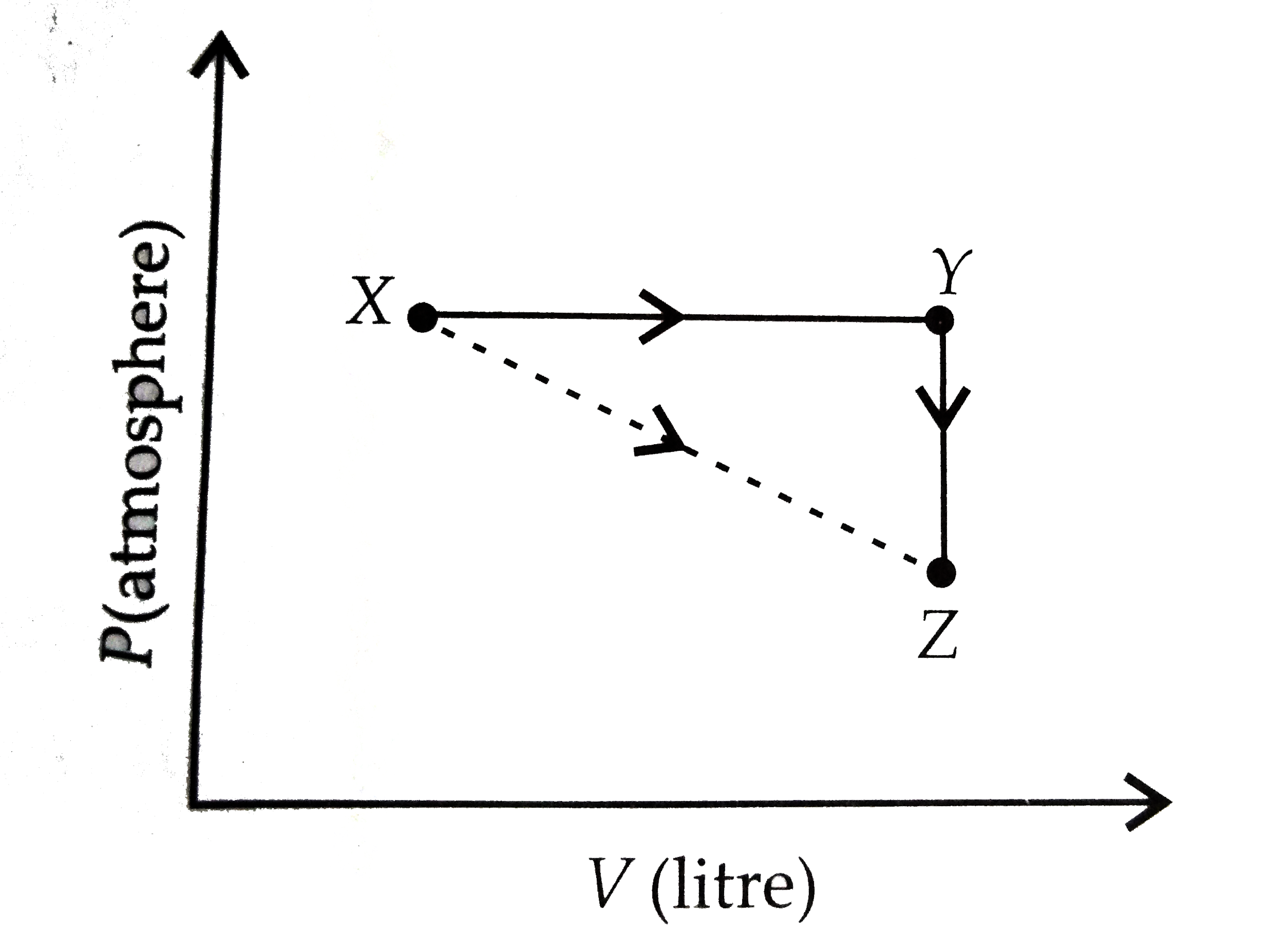Which of the following choice (s) is (are) correct for a gas?
Pal>Preal
Val=Vreal
Pal<Preal
Val<Vreal
The correct Answer is:A and D
To solve the question regarding which statements are correct for a gas, we need to analyze the properties of ideal gases and real gases based on their behavior under various conditions.
1. Understanding Ideal Gases:
- Ideal gases are theoretical gases that perfectly follow the ideal gas law, represented by the equation PV=nRT. In this equation:
- P = pressure
- V = volume
- n = number of moles
- R = universal gas constant
- T = temperature in Kelvin
- Ideal gases have no intermolecular forces and occupy no volume.
2. Understanding Real Gases:
- Real gases deviate from the ideal gas behavior under high pressure and low temperature. They have intermolecular forces and occupy space.
- The behavior of real gases can be described by the van der Waals equation, which accounts for the volume occupied by gas molecules and the attractive forces between them.
3. Analyzing the Given Statements:
- Statement 1: Pressure of ideal gas greater than real gas.
- This is incorrect because, under the same conditions, real gases generally exhibit higher pressure due to intermolecular attractions being less significant than in ideal gases.
- Statement 2: Both volumes equal.
- This is not true in general; real gases have a volume that is typically greater than that of ideal gases due to the volume occupied by gas molecules.
- Statement 3: Pressure of real gas greater than ideal gas.
- This is correct. Under certain conditions, especially at high pressure, the pressure of a real gas can be greater than that of an ideal gas.
- Statement 4: Volume of real gas greater than that of ideal gas.
- This is also correct. Real gases occupy more volume than ideal gases due to the finite size of gas molecules.
4. Conclusion:
- Based on the analysis, the correct statements regarding gases are:
- Statement 3: Pressure of real gas greater than ideal gas.
- Statement 4: Volume of real gas greater than that of ideal gas.
Final Answer:
The correct choices for a gas are:
- Statement 3
- Statement 4
- Ideal gases are theoretical gases that perfectly follow the ideal gas law, represented by the equation PV=nRT. In this equation:
- P = pressure
- V = volume
- n = number of moles
- R = universal gas constant
- T = temperature in Kelvin
- Ideal gases have no intermolecular forces and occupy no volume.
- Real gases deviate from the ideal gas behavior under high pressure and low temperature. They have intermolecular forces and occupy space.
- The behavior of real gases can be described by the van der Waals equation, which accounts for the volume occupied by gas molecules and the attractive forces between them.
- Statement 1: Pressure of ideal gas greater than real gas.
- This is incorrect because, under the same conditions, real gases generally exhibit higher pressure due to intermolecular attractions being less significant than in ideal gases.
- Statement 2: Both volumes equal.
- This is not true in general; real gases have a volume that is typically greater than that of ideal gases due to the volume occupied by gas molecules.
- Statement 3: Pressure of real gas greater than ideal gas.
- This is correct. Under certain conditions, especially at high pressure, the pressure of a real gas can be greater than that of an ideal gas.
- Statement 4: Volume of real gas greater than that of ideal gas.
- This is also correct. Real gases occupy more volume than ideal gases due to the finite size of gas molecules.
- Based on the analysis, the correct statements regarding gases are:
- Statement 3: Pressure of real gas greater than ideal gas.
- Statement 4: Volume of real gas greater than that of ideal gas.
The correct choices for a gas are:
- Statement 3
- Statement 4
Topper's Solved these Questions
- STATES OF MATTERBOOK - VMC MODULES ENGLISHCHAPTER - STATES OF MATTEREXERCISE - ENABLE
50 Videos
- STATES OF MATTERBOOK - VMC MODULES ENGLISHCHAPTER - STATES OF MATTEREXERCISE - EFFICIENT
45 Videos
- SOME BASIC CONCEPTS OF CHEMISTRYBOOK - VMC MODULES ENGLISHCHAPTER - SOME BASIC CONCEPTS OF CHEMISTRYEXERCISE - IN - CHAPTER EXERCISE - H
8 Videos
- STATES OF MATTERBOOK - VMC MODULES ENGLISHCHAPTER - STATES OF MATTEREXERCISE - IN-CHAPTER EXERCISE-I
10 Videos
Similar Questions
For an ideal gas, consider only P-V work in going from an initial state X to the final state Z. The final state Z can be reached by either of the two paths shown in the figure. Which of the following choice(s) is(are) correct? [Take ΔS as change in entropy and w as work done]

View SolutionWhich of the following statement (s) is (are) correct ?
View SolutionWhich of the following statement (s) is (are) correct ?
View SolutionWhich of the following statement (s) is (are) correct ?
View SolutionWhich of the following reaction(s) is/are correct?
View SolutionWhich of the following statement(s) is(are) correct ?
View SolutionWhich of the following statement(s) is (are) correct ?
View SolutionWhich of the following statement (s) is (are) correct?
View SolutionWhich of the following statement(s) is(are) correct ?
View SolutionWhich of the following statement(s) is(are) correct?
View Solution
